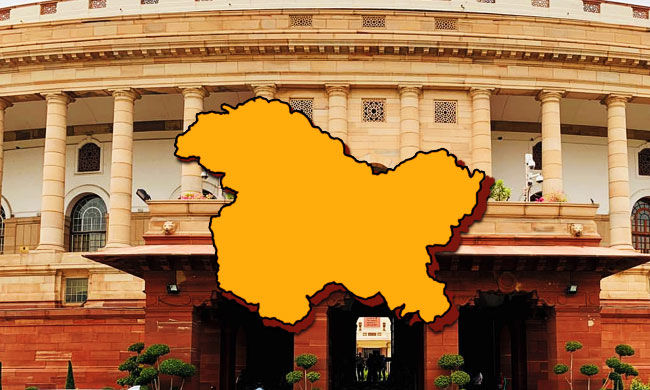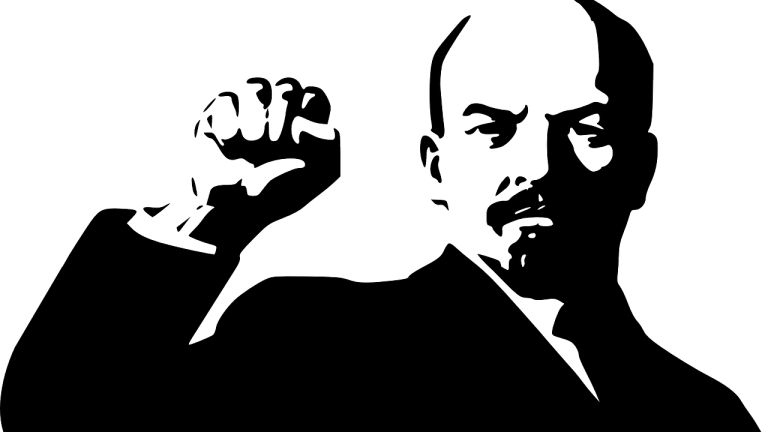Reorganisation Act 2019: Future of asymmetric federalism in India

“As a country afflicted with acute social disparities, the Indian government’s highhandedness has been blamed for consistently violating the political and fundamental rights of the people of Kashmir”
October 31, 2019; India celebrated national unity day, in order to pay tribute to Sardar Vallabhbhai Patel (a man admired by the ruling party as an important figure in ‘uniting’ the nation) on his 143rd birth anniversary. On this same day, the Indian government terminated the status of Jammu and Kashmir as a state and divided it into two separate union territories.
With emphasis on the technical aspects of the limitation of the central government, the following article traces the trajectory followed by the Indian government in executing what may be called as an attempt to “elucidate the future of asymmetrical federalism in India”. Subsequently, also reflects on the rationale of federalism.
A Brief Background
As per the Jammu and Kashmir Reorganisation Act, 2019, the state of Jammu and Kashmir got converted into Union Territories. Like numerous other policies and bills, the Reorganisation Act is another major policy decision of the current regime. It was the first time ever in the history of India that a state got demoted to two individual Union Territories. The power vested with the Parliament for the creation of new states comes under Article 3. However, the reorganization is only possible after having a conversation between the state legislature and the president. With the aim of discarding prospective dissent within the state legislature, the Indian government had an ace up their sleeve. By discovering technical lacunae in the constitutional provision, they implemented Article 356 and dismantled the above-mentioned provision by establishing the president’s rule and stating in the parliament that there was no constitutional body that needed to be consulted at that time in the state of Jammu and Kashmir.
Hence, as per Article 356 (1) B the President may by proclamation, “declare that the powers of the Legislature of the State shall be exercisable by or under the authority of Parliament”.
Constitutional slip of hand?
Under the veil of being a majority in parliament, the Centre resorted to unprecedented methods and violated the rules of procedure.
To begin with, the introduction of a bill requires the ruling party to pass on a two-day prior notice about the same to the members of parliament (MP). The MPs are expected to prepare their debate or argument(if any) accordingly. In case of any emergency, the chairman has the authority to shorten this two day period to 10 minutes, however, in the case of this Reorganization Bill, it was not circulated at all. This coercive approach led to a demonstration of dissent by the opposition. But, they were not permitted by the Chair to raise a voice. The series of events eventually led to the Home Minister introducing a bill without prior circulation and further passing the bill in the house on the very same day.
In addition to it, we must not fail to recall the irony in considering the bifurcation of the state into two union territories as per Article 3, keeping in mind that the parliament is acting on behalf of the legislature of that state. Article 3 states that if any bill suggests changes in the boundaries of a state then it must have been “referred by the President to the Legislature of that State for expressing its views thereon”. Central government not only skipped this crucial provision enunciated in the Indian constitution but this also posed a challenge to India’s spirit of federalism.
Furthermore, another important feature of the Indian Constitution states that although the parliament has the power to divide a state, alter its territorial boundaries and even diminish its area it cannot disintegrate it with no parent state left. Article 3 allows the parliament to create a state with a union of two or more states/UTs however it does not allow it to create two separate Union Territories by disintegrating the state.
Astonishingly, the ruling party has a justification for everything by playing the blame game on the erstwhile governments and shifting the focus. In order to justify this, the BJP government brought forth the example of Delhi i.e. Delhi was a state that was converted into a UT through the State Reorganization Act, of 1956. However, what they did not disclose was that Delhi was a subset of Part C of the first schedule which was similar to a Union Territory. Hence, the Act should not be compared to that of 1956.
International Reactions
This “not so constitutional” act had its consequences and the most prominent ones came from the domain of International Relations.
Keeping realism at the forefront, the Centre believed that India’s decision would not attract international attention as it would encompass the purview of domestic issues and the trade relations with the largest democracy would undermine the stance of a prospective human rights dissent from the great powers. The centre was right to an extent considering the incompetent diplomacy of its rival state Pakistan, which wasn’t able to attract any international attention towards the territorial dispute it has had with India over the Kashmir region. In addition to that, Indian foreign policy saw a significant change in terms of bilateral visits/talks since 2014, which gave India an advantage over the abrogation of Article 370 primarily based on the argument that it is a “domestic issue”.
However, India did attract some attention from the United States of America, predominantly due to the questions raised over their form of government. The largest democracy in the world was to be condemned by the major proponent of democracy over any kind of human rights violation. Constant tweets about the issue and denied permissions of the U.S. officials to the valley have gathered momentum for constructive criticism of the decision.
Despite of Pakistan’s failed attempts, some prominent leaders of the Muslim-majority states have also put forth their concerns. Last but not least, the largest neighbouring state to India; is China. It was the only significant support Pakistan could gather, it has also attempted to play a key role historically as a third party to the Kashmir dispute and was not willing to evade this opportunity.
Federalism in the Indian Context
The reorganisation bill is at odds with the idea of federalism. In the Indian context, in lieu of federalism, the system is argued to be following asymmetrical federalism.
The bifurcation of a state into two UTs isn’t only a change in the territorial boundaries of a state, but rather a move that brings up grave and key issues about India’s constitution, which is established on a guideline of federalism. In the Indian context, instead of federalism, the system is argued to be following asymmetrical federalism.
“Asymmetrical federalism” can be understood as federalism dependent on unequal power distribution in politics, governance and economic arrangements between the units comprising an alliance. Asymmetry in the grouping in a federation can be seen in two different ways; firstly, between the centre and the states and secondly within the states. The whole idea of an asymmetric federal structure is to grant a special status to some federal units through the Constitution. As a multicultural society, the asymmetrical framework is not only a preferred but rather a necessary step to celebrate its institution of unity in diversity. The Indian state has union territories with and without legislature, this is also a very integral part of its federal system being asymmetrical and the state of J&K was also divided into UTs with and without legislature. Within India, two other UTs also exist with legislature other than Kashmir i.e. Delhi and Puducherry. They also have exceptions within them as Delhi in terms of legislative powers has three exceptions other than the concurrent list. Police, land and public order are the three exceptions and the parliament has the power to challenge and subsequently change any order by the legislative assembly.
Future of federalism at stake?
The basic difference between the unitary and the federal system is that in a unitary system, the centre has all the powers concerning legislature and administration. Whereas, in a federal system the identification of the autonomy of constituent units is the key feature that is responsible for their decentralised legislative as well as executive powers. Getting deprived of that autonomy, the state of Jammu and Kashmir had till August 6, 2019, is the reason to associate it with federalism.
There’s no exclusiveness in the terms of special status which is limited to Kashmir. However, the asymmetry which we used to observe in the case of Kashmir was exclusive and the relation between the centre and state was different from other states’ special status. Other states usually have authority provided to the governors which causes the asymmetry. There’s a certain relationship that has historically played out between the centre and the state of J&K. The centre regardless of the NDA or the UPA government has always tried to be dominant/enforcing when it comes to the Kashmir valley.
Conclusion
India is a country that has demonstrated itself on the ‘nation-state’ approach which recognises geographically contiguous linguistic and ethnic identities for state formation instead of the European country ‘state model’ which is focused on the homogenisation of the national identity. With this act, the identity and autonomy of the Kashmiri people might have been jolted. The promises made by the Indian government while signing the instrument of accession are compromised as the power distribution between the Centre and the state has changed. Throughout the years, be that as it may, the aims of the Union government have changed by expanding the role of the Centre in issues over which the state administration of J&K had warded either by misleading or conspicuous utilization of the coercive state apparatus.
The NDA government is adept at establishing control; it has been using the notion of state security as a shield to violate multiple agreements and exercise more control over the region. Notwithstanding, the current regime has created a very nuanced understanding of security for the people of this country; reiterating their stance, the Centre has been known to change the security situation for good or bad since they came into power. What we witnessed in 2019 was the rise of another constitutional jurisprudence and Kashmir was not the first or the last time it happened. It started with the accusations of numerous bills being presented as money bills to dupe the Rajya Sabha and since then we have seen the Citizenship Amendment Act, 2019 and quite recently, the Farm Bill 2020. The Constitution is considered as the preeminent rule that everyone must follow, from which all the powers are provided and by which all state activities are to be guided. Every resident of India, including the individuals who showed support towards this act, ought to be concerned over the point of reference this move sets for the eventual fate of federalism in the nation.
References
- SAXENA, REKHA. “Is India a Case of Asymmetrical Federalism?” Economic and Political Weekly, vol. 47, no. 2, 2012, pp. 70–75. JSTOR, www.jstor.org/stable/23065612. Accessed 17 May 2020.
- “Diminishing the Role of Parliament: The Case of the Jammu and Kashmir Reorganisation Bill.” Economic and Political Weekly, 15 Nov. 2019, www.epw.in/engage/article/diminishing-role-parliament-case-jammu-and-kashmi.
- “CADIndia.” CAD, https://www.constitutionofindia.net/constitution_of_india/the_union_and_its_territory/articles/Article%203
- “Kashmir Explainer: From Article 370 to Article 3, Modi-Shah Upend the Constitution.” The Wire, thewire.in/government/kashmir-explainer-article-370-narendra-modi-amit-shah-constitution.
- Mishra, Abhay, et al. “Jammu & Kashmir to Officially Split into 2 Union Territories Wednesday Midnight.” ThePrint, 30 Oct. 2019, theprint.in/india/jammu-kashmir-to-officially-split-into-2-union-territories-wednesday-midnight/313445/.
- Venkataramakrishnan, Rohan. “J&K: Why Is BJP Turning a State into a Union Territory and Diminishing Citizens’ Democratic Rights?” Scroll.in, Scroll.in, 5 Aug. 2019, scroll.in/article/932895/j-k-why-is-bjp-turning-a-state-into-a-union-territory-and-diminishing-citizens-democratic-rights
- “The Siege in Kashmir Is Damaging India’s Image Abroad” The Wire, https://thewire.in/politics/the-siege-in-kashmir-is-damaging-indias-image-abroad.
- Mohan, A. (2019, November 18). Manmohan Singh RAPS Modi govt for misuse of ‘money bill’ provisions. Business Standard. https://www.business-standard.com/article/current-affairs/manmohan-singh-raps-modi-govt-for-misuse-of-money-bill-provisions-119111801754_1.html.
PICTURE SOURCE: Live Law









Good article